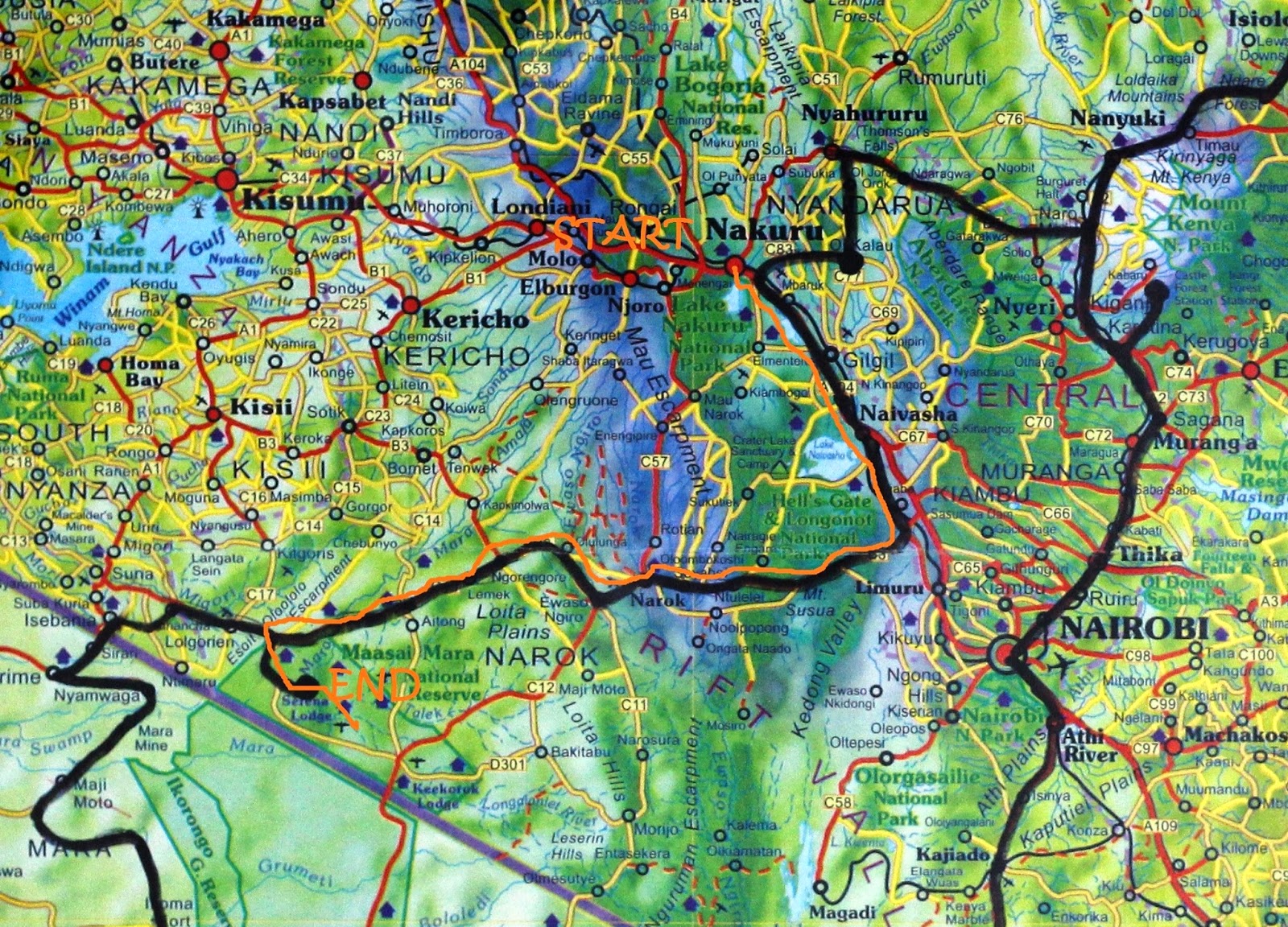There were things I liked about our drives between national parks/reserves as much as I liked the parks and reserves themselves. On the game drives we could appreciate the natural world, but on our drives between places, we really got to appreciate the human world. Such was the case on our long drive from Lake Nakuru to the Mara Serena Lodge in the Maasai Mara National Reserve.
Some things are the same all over the world:
And some things are NOT the same:
On our first bathroom/shopping stop, we encountered our first African squat toilet (but not our last). Note the lack of a sink, paper, etc. Suddenly I understood why almost all African women wear dresses.
However, it was also at this same bathroom stop/gift shop that an especially astute member of our party discovered The Big Five Wood Carving:


Remember "The Big Five"? The term refers to the five African game animals most difficult to hunt on foot: the elephant, the lion, the Cape buffalo, the leopard, and the rhino. Coincidentally, there are five attorneys in my husband's firm, and all five of them stood in front of this carving reflecting on how remarkably appropriate it would be as an art piece in their office lobby. After some consultation with each other and the wives and much haggling over price, the deal was done, papers were signed, and a quick shipment was promised.
Some things are the same all over the world:
 |
| Cute kitty at our first bathroom/shopping stop. |
On our first bathroom/shopping stop, we encountered our first African squat toilet (but not our last). Note the lack of a sink, paper, etc. Suddenly I understood why almost all African women wear dresses.
However, it was also at this same bathroom stop/gift shop that an especially astute member of our party discovered The Big Five Wood Carving:


Remember "The Big Five"? The term refers to the five African game animals most difficult to hunt on foot: the elephant, the lion, the Cape buffalo, the leopard, and the rhino. Coincidentally, there are five attorneys in my husband's firm, and all five of them stood in front of this carving reflecting on how remarkably appropriate it would be as an art piece in their office lobby. After some consultation with each other and the wives and much haggling over price, the deal was done, papers were signed, and a quick shipment was promised.

















.JPG)



.JPG)



